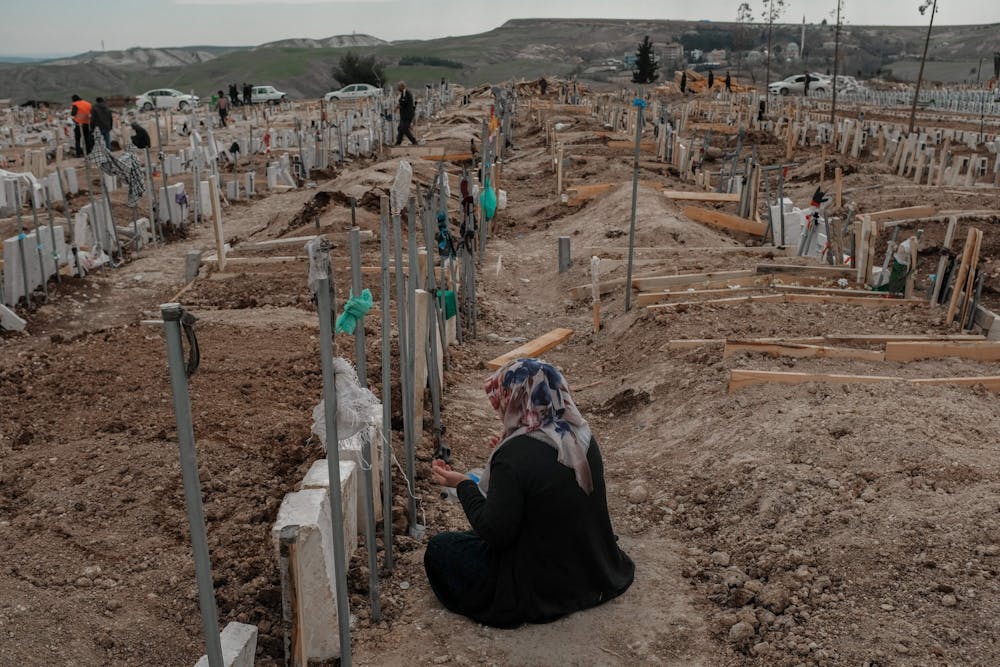Twelve IU organizations came together to raise money and awareness for people affected by the recent earthquake in Turkey and Syria that has killed over 46,000 individuals.
On Monday, the organizations hosted a fundraising event for Turkey and Syria in the Frangipani Room at the Indiana Memorial Union. IU students, faculty and Bloomington community members were welcomed.
Rahul Shrivastav, IU’s Provost and Executive Vice President gave the opening remarks. He thanked those who attended the event and noted that there was a second earthquake of 6.3 magnitude in Turkey and Syria just two weeks after the initial one.
“It is important for us to come together as we are now, in grief and in action,” Shrivastav said.
The educational forum consisted of three presentations from IU faculty members discussing the physical and geological aspects of the earthquake and the political factors that added to the disaster.
[Related: Members of Bloomington Turkish community impacted by recent earthquake]
Michael Hamburger, a professor in the Department of Earth & Atmospheric Sciences, presented on the physical aspects of what caused the earthquake, what the impacts were and what can be done to prevent events like this in the future.
“The area of eastern Turkey and Syria that was struck by these earthquakes is at an extremely complex and really quite remarkable confluence of four major tectonic plates,” Hamburger said. "There is no doubt about it, an earthquake of this size occurring anywhere in the world, would produce significant damage.”
Hamburger said that there have been over 47,000 deaths, 100,000 injuries and 85,000 buildings damaged. To prevent events like this in the future, Hamburger said that it is important for Turkey and Syria to build more earthquake resilient buildings in the future.
Kaya Sahin, an associate professor in the Department of History, an adjunct associate professor in the Department of Central Eurasian Studies and in the Department of Near Eastern Languages and Cultures, presented on the details that led to the amount of damage caused in Turkey.
Sahin said public and government buildings in Turkey are often not up to code and are at higher risk for damage during earthquakes.
“The damage is estimated at $84 million, which is roughly 10% of Turkey's GDP,” Sahin said.
Asaad Alsaleh, an associate professor in Middle Eastern Languages and Cultures, presented on the factors that led to the high rates of death in Syria.
One factor is the population concentration, Alsaleh said. During the Civil War in Syria in 2017, the now affected region was considered a demilitarization zone. This caused many Syrian refugees to flee there for refuge, so more than 4 million were living in the area when the 7.8 magnitude earthquake hit.
Alsaleh also discussed the lack of infrastructure. The demilitarization zone in northwest Syria does not have a true governing body, and this resulted in many hospitals and health clinics closing, Alsaleh said. This means that the people who were injured had nowhere to go to get help after the earthquake.
[Related: Bloomington community rallies in support of Asian, Asian American, Pacific Islander communities]
Kuzey Can Bektaş, an international student from Turkey, said his dad is a war photographer and was one of the first journalists to reach Antakya, Turkey after the earthquake. He shared some of the photos his father took depicting the disasters after the forum.
The Onia Quartet from the Jacob’s School of Music played “Langsamer Satz” by Anton Webern to accompany the presentation of the photos that Bektaş’s father captured.
Massa Al-Ani, member of the Middle Eastern Student Association, and senior at IU, and Selim Yavuz, president of the Turkish Student Association and third-year PhD student talked about the options for donating to support those affected by the earthquake.
Inside of the event program, a QR code was included that led to the event linktree which provided links and resources about how to help victims of the earthquake.






